
Earl of Buckinghamshire is a title in the Peerage of Great Britain. It was created in 1746 for John Hobart, 1st Baron Hobart.
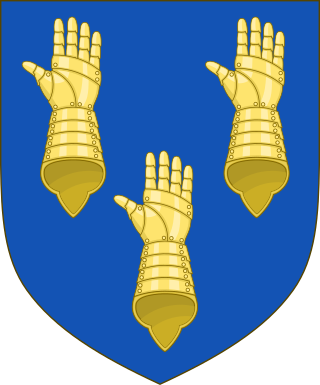
Baron Barnard, of Barnard Castle in the Bishopric of Durham, is a title in the Peerage of England. It was created in 1698 for Christopher Vane, who had previously served as a member of parliament for County Durham and Boroughbridge. Vane was the son of Sir Henry Vane the Younger and grandson of Sir Henry Vane the Elder. His grandson, the third Baron, notably served as Paymaster of the Forces and as Lord Lieutenant of County Durham. In 1754 he was created Viscount Barnard and Earl of Darlington, both in the County Palatine of Durham. Lord Darlington was the husband of Lady Grace FitzRoy, daughter of Charles FitzRoy, 2nd Duke of Cleveland, the illegitimate son of King Charles II by his mistress Barbara Villiers, 1st Duchess of Cleveland.

Baron Dacre is a title that has been created three times in the Peerage of England, each time by writ.

Earl of Limerick is a title that has been created twice in the Peerage of Ireland, associated first with the Dongan family, then with the Pery family. It should not be confused with the title Viscount of the City of Limerick held by the Hamilton family also Earls of Clanbrassil.

Earl of Listowel is a title in the Peerage of Ireland. It was created in 1822 for William Hare, 1st Viscount Ennismore and Listowel, who had earlier represented Cork City and Athy in the Irish House of Commons.

Viscount Dillon, of Costello-Gallen in the County of Mayo, is a title in the Peerage of Ireland. It was created in 1622 for Theobald Dillon, Lord President of Connaught. The Dillons were a Hiberno-Norman landlord family from the 13th century in a part of County Westmeath called 'Dillon's Country'. His great-grandson, the seventh Viscount, was a supporter of the Catholic King James II of England and was outlawed after the Glorious Revolution. He founded 'Dillon's Regiment' of the Irish Brigade in the French Army, which was supported by the Wild Geese and achieved success at Fontenoy in 1745.
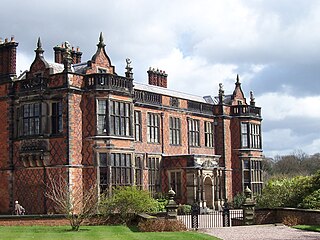
Viscount Ashbrook is a title in the Peerage of Ireland. It was created in 1751 for Captain Henry Flower, 2nd Baron Castle Durrow. The title of Baron Castle Durrow, in the County of Kilkenny, had been created in the Peerage of Ireland in 1733 for his father William Flower. He was a Colonel in the Army and also represented County Kilkenny and Portarlington in the Irish House of Commons. He was praised by Jonathan Swift as "a gentleman of very great sense and wit". As of 2022, the titles are held by the first Viscount's descendant, the eleventh Viscount, who succeeded his father in 1995.

Viscount Exmouth, of Canonteign in the County of Devon, is a title in the Peerage of the United Kingdom.
Viscount Hampden is a title that has been created twice, once in the Peerage of Great Britain and once in the Peerage of the United Kingdom. The first creation came in the Peerage of Great Britain when the diplomat and politician Robert Hampden, 4th Baron Trevor, was created Viscount Hampden, of Great and Little Hampden in the County of Bedford on 14 June 1776. The title of Baron Trevor, of Bromham, had been created in the Peerage of Great Britain in 1712 for his father, the lawyer Sir Thomas Trevor. Both titles became extinct in 1824 on the death of the first Viscount's second son, the third Viscount.
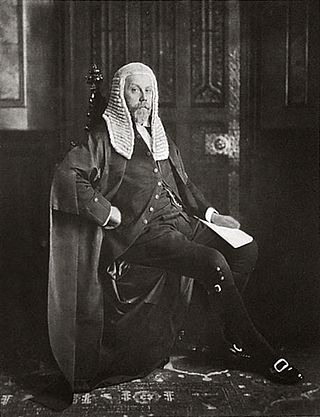
Viscount Ullswater, of Campsea Ashe in the County of Suffolk, is a title in the Peerage of the United Kingdom. It was created in 1921 for James Lowther upon his retirement as Speaker of the House of Commons. He was the eldest son of the Hon. William Lowther, third son of the Hon. Henry Lowther, second son of William Lowther, 1st Earl of Lonsdale. The first Viscount lived to the age of 93, and was pre-deceased by both his eldest son the Hon. Christopher Lowther, a Conservative politician, and his eldest son's eldest son John Arthur Lowther (1910–1942), the title being inherited by his seven-year-old great-grandson, the second and current Viscount, in an extremely rare instance of a great-grandson succeeding his great-grandfather in a peerage. The second Viscount held office in the Conservative administrations of Margaret Thatcher and John Major and since 2003 he has been one of the ninety elected hereditary peers that remain in the House of Lords after the passing of the House of Lords Act 1999.
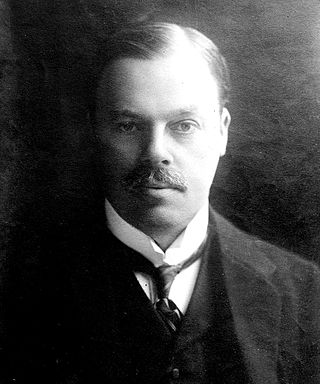
Viscount Rothermere, of Hemsted in the county of Kent, is a title in the Peerage of the United Kingdom. It was created in 1919 for the press lord Harold Harmsworth, 1st Baron Harmsworth. He had already been created a baronet, of Horsey in the County of Norfolk, on 14 July 1910, and Baron Rothermere, of Hemsted in the County of Kent, in 1914. Every holder of the titles has served as chairman of Daily Mail and General Trust plc. As of 2022 the titles are held by the first Viscount's great-grandson, the fourth Viscount, who succeeded his father in 1998.

Viscount Montgomery of Alamein, of Hindhead in the County of Surrey, is a title in the Peerage of the United Kingdom.

Viscount Caldecote, of Bristol in the County of Gloucester, is a title in the Peerage of the United Kingdom. It was created in 1939 for the lawyer and politician Sir Thomas Inskip so that he could sit in the House of Lords and serve as Lord Chancellor. As of 2010 the title is held by his grandson, the third Viscount, who succeeded his father in 1999.

Viscount Daventry, of Daventry in the County of Northampton, is a title in the Peerage of the United Kingdom. It was created on 6 May 1943 for Muriel FitzRoy, in honour of her late husband, the Hon. Edward FitzRoy, Speaker of the House of Commons from 1928 until his death in 1943. The first Viscountess was the sister of Frank Douglas-Pennant, 5th Baron Penrhyn, whilst Edward FitzRoy was the second son of Charles FitzRoy, 3rd Baron Southampton, and a male-line descendant of Charles FitzRoy, 2nd Duke of Grafton. Lady Daventry was succeeded by her eldest son, the second Viscount. He was a captain in the Royal Navy. He was succeeded by his nephew, the third Viscount. His father had assumed the additional surname of Newdegate, which was that of his father-in-law. As of 2017 the title is held by his son, the fourth Viscount, who succeeded in 2000. As a male-line descendant of both the third Baron Southampton and the second Duke of Grafton, he is also in remainder to those peerages.

Baron Hardinge of Penshurst, in the County of Kent, is a title in the Peerage of the United Kingdom. It was created in 1910 for the diplomat the Hon. Sir Charles Hardinge, Viceroy and Governor-General of India from 1910 to 1916. He was the second son of Charles Hardinge, 2nd Viscount Hardinge. His son, the second Baron, served as private secretary to both King Edward VIII and King George VI.
Baron Maclay, of Glasgow in the County of Lanark, is a title in the Peerage of the United Kingdom. It was created in 1922 for the Scottish businessman Sir Joseph Maclay, 1st Baronet. He was Chairman of Maclay & Macintyre, shipowners, of Glasgow, and also served as Minister of Shipping in the war-time coalition of David Lloyd George, without being in Parliament. Maclay had already been created a Baronet, of Park Terrace in the City of Glasgow in the County of Lanark, in 1914. His eldest surviving son, the second Baron, represented Paisley in the House of Commons as a Liberal. As of 2010 the titles are held by the latter's eldest son, the third Baron, who succeeded in 1969.

Baron Trevor is a title that has been created three times. It was created first in 1662 in the Peerage of Ireland along with the viscountcy of Dungannon. For information on this creation, which became extinct in 1706, see Viscount Dungannon.

Viscount Midleton, of Midleton in the County of Cork, is a title in the Peerage of Ireland. It was created in 1717 for Alan Brodrick, 1st Baron Brodrick, the Lord Chancellor of Ireland and former Speaker of the Irish House of Commons. He was created Baron Brodrick, of Midleton in the County of Cork, in 1715 in the same peerage. His grandson, the third Viscount, co-represented Ashburton then New Shoreham in the British House of Commons. His son, the fourth Viscount, sat similarly for Whitchurch for 22 years. In 1796 he was created Baron Brodrick, of Peper Harrow in the County of Surrey, in the Peerage of Great Britain, with a special remainder to the heirs male of his father, the third Viscount. On the death of his son, the fifth Viscount, this line of the family failed.
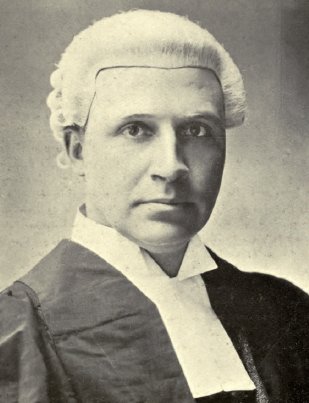
Viscount Greenwood, of Holbourne in the County of London, was a title in the Peerage of the United Kingdom. It was created in 1937 for the politician Thomas Hamar Greenwood, 1st Baron Greenwood. He served as the last Chief Secretary for Ireland from 1920 to 1922. Greenwood had already been created a Baronet, of Onslow Gardens in the Royal Borough of Kensington, in the Baronetage of the United Kingdom on 8 February 1915, and Baron Greenwood, of Llanbister in the County of Radnor, in the Peerage of the United Kingdom, in 1929. His younger son, the 3rd Viscount, who succeeded his elder brother in 1998, was an actor. The titles became extinct on his death in 2003.

Viscount Shannon, in the County of Limerick, was a title in the Peerage of Ireland. It was created in 1660 for the Honourable Francis Boyle, sixth son of Richard Boyle, 1st Earl of Cork. He was succeeded by his grandson, the second Viscount. He was a Field Marshal in the Army and served as Commander-in-Chief of Ireland from 1727 to 1740. The title became extinct on his death in 1740.



















